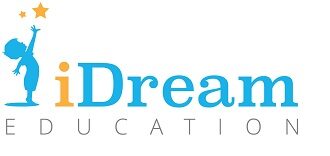10 essential methods for doing market research

A key step before the launch or even the design of a new campaign or a new product, you have probably already carried out a market study.
Although it is not an exact science, market research allows you to better understand your market and its consumers to ensure that your campaign and/or product truly corresponds to the expectations and needs of your target audience and differentiates itself from the offer of your competitors.
This short video clearly explains the key steps to follow to do market research.While the usefulness of market research is irrefutable, there are different ways to do it.
Market research in the digital age
We live in a world overflowing with information. Combing through this uninterrupted stream of data to extract the most relevant insights on a given market or audience can therefore be a relatively daunting task.
This is where market research comes in, which allows brands and researchers to gather information from target markets and audiences.
Once based on traditional methods such as focus groups or surveys, market research is now at a crossroads. New tools for extracting information, such as the integration of social media data, have been added to the range of methods available.
We’ll go over the different types of market research and the methodologies available to get the most out of them.
Primary or secondary market research
Market research falls into two distinct categories: primary and secondary, also known as field and desk (although this terminology seems outdated, as many primary research can be done from your desk) .
Primary research (internal)
Primary market research is research that you do yourself. This process includes organizing your own focus groups or conducting surveys. Its name refers to the movement carried out “in the field” in order to obtain data.Secondary market research is research that other people have done and that you want to use. These may be studies carried out by researchers or financial data published by companies.
10 methodologies for conducting market research
The methodologies that follow cover both areas. The ones you want to use will depend on your goals. Read on and see which suits you best.
Discussion groups (or panels)
A simple concept but one that can be difficult to put into practice.
You gather several people in a room, record them and ask them about the topic that interests you. For some it will be ideas for new products, for others it will be opinions on a political candidate.
The organizer will then try to extract insights from these discussions, or use them to get a sense of the perspective of society as a whole on a specific topic. Typically, participants are selected based on certain criteria, such as demographics, interests, or occupation.
The strength of such a method lies in the natural conversation that can take place between the participants (if the discussion is set up in the rules).
Compared to a questionnaire or poll with a rigid set of questions, a focus group can go off on tangents that the organizer could not have anticipated (and, for which he would not have a question). These digressions can be a good thing insofar as unexpected topics arise, or a bad thing if the objectives of the research are to answer a very specific set of questions.
It is important to recognize the nature of the discussion as a factor that may bias the resulting data. Focus groups can encourage participants to talk about things they might not otherwise have discussed, as they are likely to be influenced by other group members or the presence of the researcher. This observation also applies to unstructured individual interviews.
The surveys
In this type of study, a number of questions are asked of the participants (in person, by telephone, by e-mail or by means of an online form). They can be open or closed. There are many types of closed questions:
Surveys are extremely versatile due to the variety of question types. Mixing and matching them to get what you need takes care and thought. Some questions require specific setup.
The result also depends on how you pose them. Relevant questions require relevant analysis. Crafting questions that are clear, concise, free of vague, undirected wording can help you achieve results that reflect the real nuances of participants.
There are 10,000 different ways to conduct surveys, from creating your own survey from scratch to using certain tools, like Qriously , to do the heavy lifting for you.
Le Social Listening
A true digital extension of the human being, social media allow people to freely express their opinions, thoughts and points of view.
With users sharing considerable content instantly, social media acts as Ali Baba’s cave for market research. They offer countless data to mine and dissect.
By using a social listening tool like Consumer Research , researchers can get their hands on the topics that interest them, then analyze the most relevant posts. They are thus able to monitor brand mentions and follow what consumers are saying about the products it brings to market (for example).
Social Listening democratizes insights and is particularly useful for market research due to the large amount of unfiltered information available. Due to its unsolicited nature, you are (almost) guaranteed that the content shared is an accurate reflection of what the person is thinking and their interests (as opposed to something they dwell on in the presence of ‘a researcher).
Interviews
With this method, the interviewer speaks directly to the respondent. This approach is more personal, and promotes clear and precise communication, making it the ideal approach for open-ended questions. Additionally, interviews allow the interviewer to go beyond the answers







